
Autonomous Driving Experience Cards
A transmedial card-based toolkit for creating positive experiences for passengers in SAE level-5 autonomous vehicles by focussing on AI transparency, understanding, safety and control.
💡 PDF template for physical cards will be available in the near future.
Fully autonomous driving depends on artificial intelligence (AI) and simultaneously removes the passenger from any means of control. Therefore, it is vital for autonomous driving to ensure that passengers are aware of and understand the vehicle's driving decisions to make them feel safe.
This entails a new, complex interdisciplinary design challenge. Therefore, the ADX.cards toolkit has been designed and developed as part of a rigorous human-centred design case study. The toolkit focuses on creating AI transparency in autonomous driving using different feedback modalities.
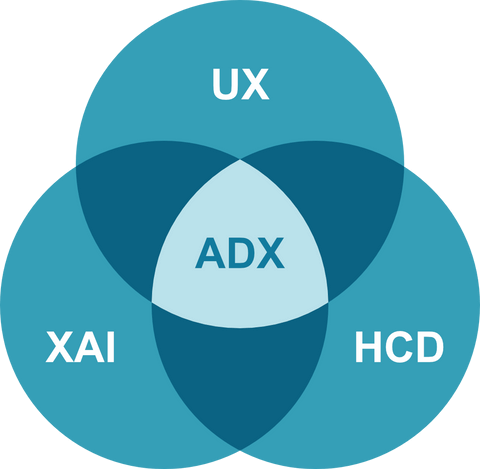
Autonomous driving experience (ADX) design is an upcoming topic in research and design, focussing on the user (human-centred design), their user experience (UX) and breaking down the autonomous system for them (explainable AI).
The ADX.cards toolkit has multiple goals:
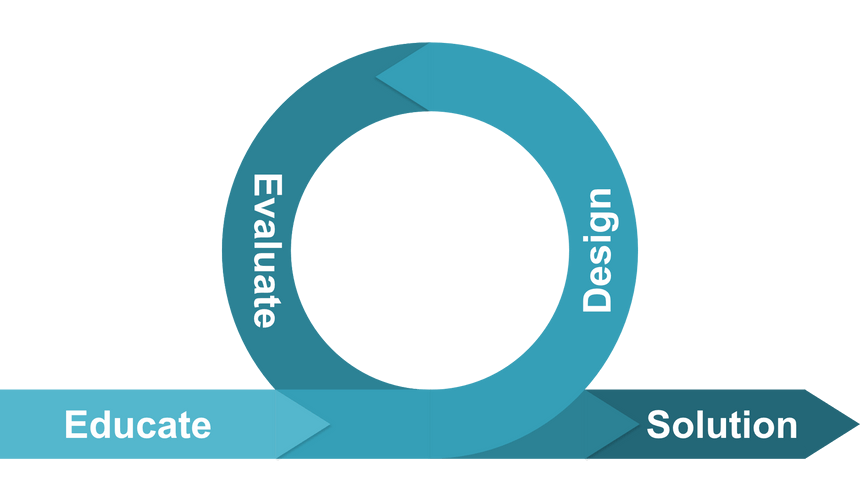
Assist in educating yourself or others on level 5 autonomous driving and related domains of expertise, including transparency, explainable AI, and user experience.
By utilising several feedback modalities, the toolkit can assist you in designing AI transparency and creating prototypes for passengers of autonomous vehicles to improve their user experience, comprehension of the system, and sense of safety and control.
Support in developing an evaluation strategy for your designs and prototypes and guidance on how to analyse and interpret the findings of your evaluation.
How it works
ADX.cards is a transmedia toolkit combining physical cards and digital content.
Most cards feature a QR code on the back that you can scan to add interactive material and more details to the physical cards.
You can use the physical cards, for example, in a workshop, and access more content via the QR codes. Or you can only use the website and the digital cards.

User Stories
Using the Website

Paula will write her Bachelor's thesis about HCI in autonomous driving and plans to perform empirical research. To educate herself on the topic and get a basic understanding of all relevant knowledge, her supervisor recommended the ADX.cards website to her.
After browsing the website, she has a basic understanding and a good starting point of relevant theories. She was able to get some inspiration for her HCI designs. Furthermore, she isn’t afraid to create an evaluation strategy anymore as the complex topic and multiple buzzwords now make sense to her.
Using the Physical Cards

Sam is working at a car manufacturer and is planning to host a workshop. He and his colleagues should create new ideas for interior communication in their upcoming autonomous vehicle. The workshop will be attended by designers and engineers alike.
Sam starts by handing out the knowledge cards to get everybody on the same page. Afterwards, Sam hands out the feedback modality cards to gain inspiration and to agree on one modality type. Then, the whole team uses the blank card to design their own feedback modality that they want to implement in a prototype.
There are three different types of cards…
Knowledge Cards
These cards serve as a knowledge library with all the interdisciplinary data needed for the ADX.cards and AI transparency in autonomous driving.

Feedback Modality Cards
These cards explain the scientifically proven feedback modalities used to design for AI transparency, their effects on different metrics and how to use them.
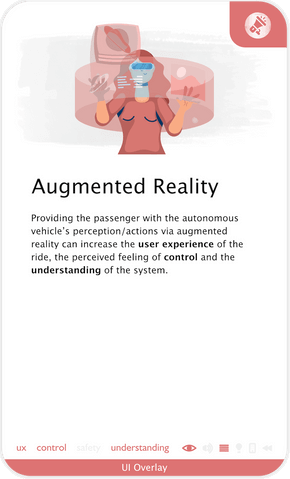
Evaluation Strategy Cards
These cards help you build an evaluation strategy for your designs and teach you how to use the different quantitative and qualitative methods and evaluate them.

… with QR codes on their back
QR codes on the knowledge cards will provide you with further information on relevant knowledge.
QR codes on the feedback modality cards will provide you with multiple interactive examples of the different modalities to gain a better understanding and boost your creativity.
QR codes on the evaluation strategy cards will provide you with a detailed evaluation manual to help you build your evaluation strategy.
Please feel free to examine each card in whatever order you like. However, we have a few recommendations for where to start based on what you want to achieve with the ADX.cards toolkit:
If you are new to the topic:
Take a look at the Knowledge Cards to obtain a general understanding of the subject of AI transparency in autonomous driving and all relevant areas.
If you are a designer:
Look at the Feedback Modality Cards cards to get an idea of the different modalities you might utilise as a starting point for your concepts. To learn more about the metrics you can design for, look at the knowledge cards.
If you are a researcher:
Take a look at the Evaluation Strategy Cards. They provide instructions on how to build your evaluation for the various metrics and how to analyse it.
About
A PhD project by Tobias Schneider with the Glasgow School of Art and Stuttgart Media University. Big thanks to my supervisors Prof. Dr. Steve Love, Prof Dr. Sabiha Ghellal and Prof. Dr. Ansgar Gerlicher.
Publications
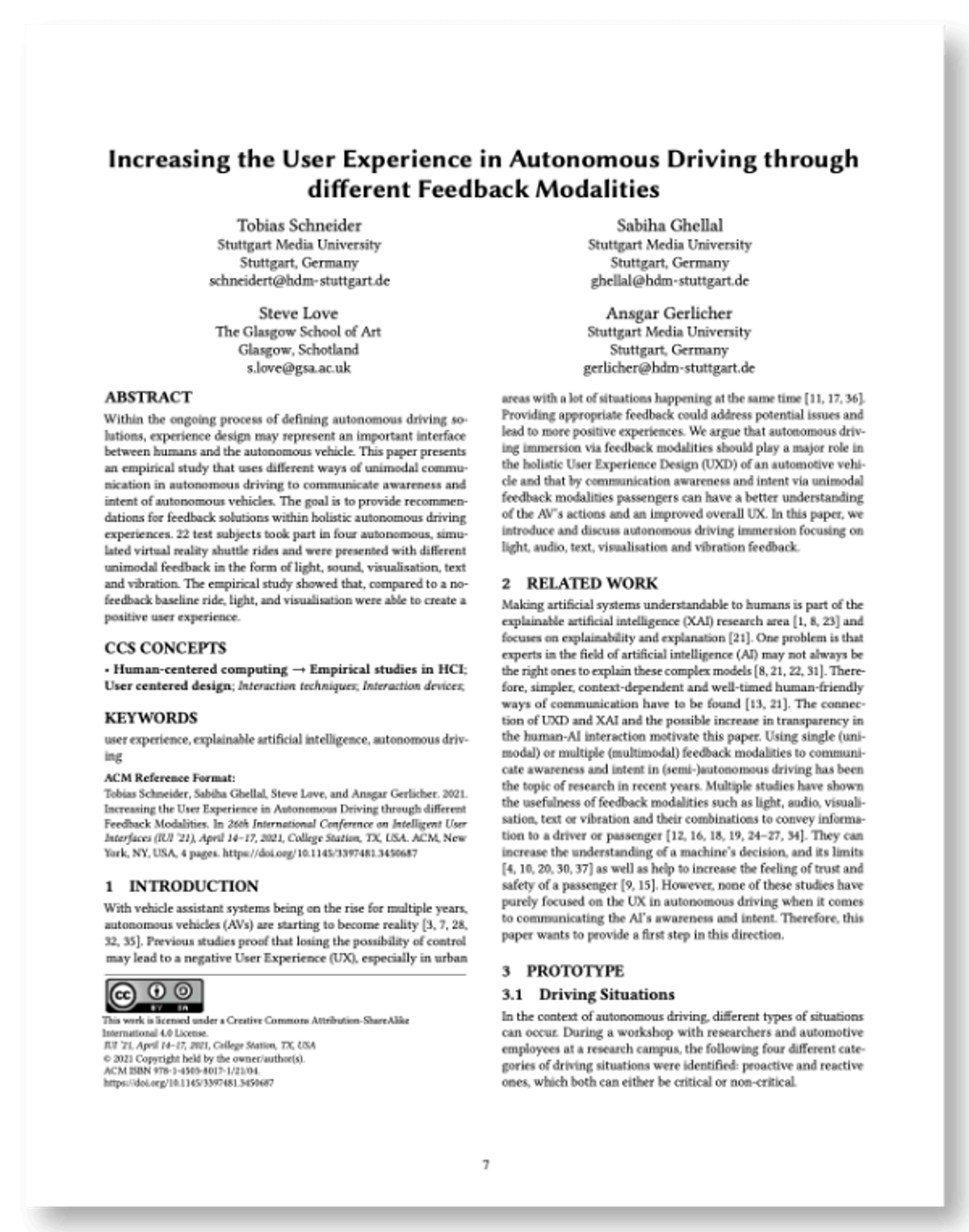
Tobias Schneider, Sabiha Ghellal, Steve Love and Ansgar R.S. Gerlicher April 2021 IUI ’21

Tobias Schneider, Joana Hois, Alischa Rosenstein, Sabiha Ghellal, Dimitra Theofanou-Fülbier and Ansgar R.S. Gerlicher Mai 2021 CHI ‘21
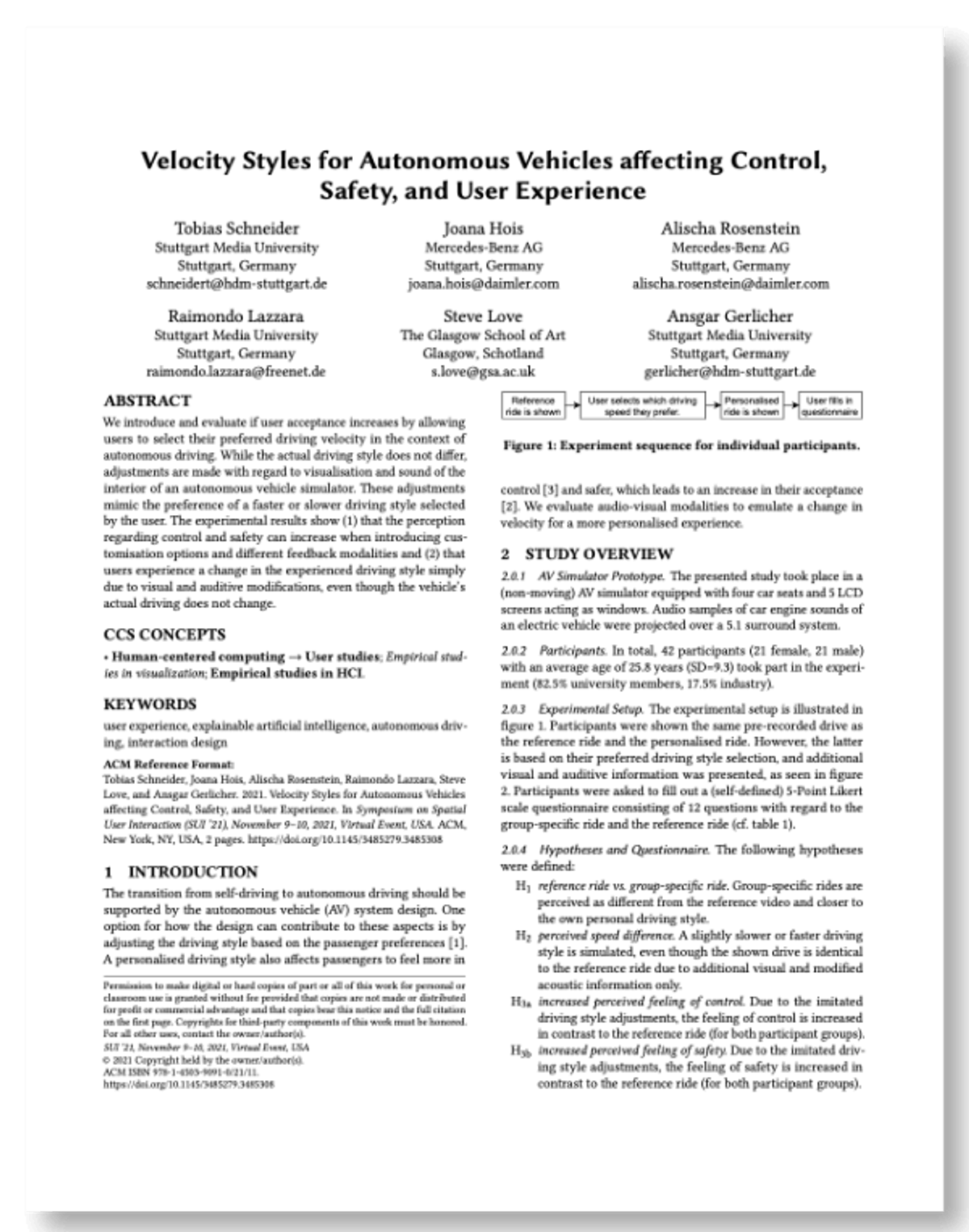
Tobias Schneider, Joana Hois, Alischa Rosenstein, Raimondo Lazzara, Steve Love, Ansgar R.S. Gerlicher November 2021 SUI ‘21

Tobias Schneider, Joana Hois, Alischa Rosenstein, Sandra Metzl, Ansgar R.S. Gerlicher, Sabiha Ghellal, Steve Love March 2023 IUI ‘23
Contact
If you are interested in the project get in touch with me by mail: mail@tobiasschneider.net